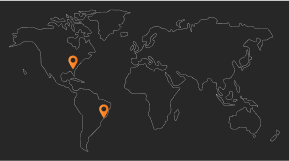The New Order of Speed: How AI Is Redefining Processes and Structures

Artificial intelligence is advancing at a pace that challenges the very idea of stability. What is considered a reliable framework today may become an outdated relic tomorrow.
Tools emerge and vanish before they’re fully absorbed. Yesterday’s best practices are no longer suitable for the next sprint.
This constant acceleration of technology is not just a technical issue, it's a structural and strategic challenge impacting companies, teams, and entire business models.
In software development, this reality is even more evident. Technologies that once took years to mature now evolve in a matter of months.
Automation tools, development frameworks, and agile methodologies are being continuously redefined.
The problem is that while technology moves forward, the processes meant to organize this progress are left behind. Standard Operating Procedures (SOPs) and playbooks, designed to ensure efficiency and consistency, quickly become obsolete, leaving organizations with a dilemma: how do you maintain order in an environment that demands extreme flexibility and rapid adaptation?
The Collapse of the Traditional Structure

Structured processes have long been the backbone of operational efficiency. They provide predictability, reduce risk, and ensure quality standards.
However, their rigidity can’t withstand the pace of AI-driven change. Frequent updates, new discoveries, and disruptive innovations make any attempt at standardization feel like a race against time, one that companies can’t win without shifting their approach.
Organizations reliant on fixed SOPs and static playbooks face two core challenges:
Rapid obsolescence: With each new software update or AI breakthrough, procedures must be revised, rewritten, and redistributed. This creates a significant operational burden, and often still fails to keep up.
False sense of security: Rigid processes can create an illusion of control, causing teams to follow outdated rules that no longer align with market realities. The result? Inefficiencies, wasted resources, and lost competitiveness.
So the real question is: Is the problem with the processes themselves, or with how we design them? In a world where change is the only constant, sticking to traditional methods may be a strategic error.
The Rise of Adaptive Systems
If traditional structures can’t keep up with AI, the answer isn’t to abandon them, it’s to redesign them. What’s needed is a flexible model that updates in real time. The solution lies in dynamic processes that adapt as new variables emerge.
Forward-thinking companies are already embracing practices such as:
Real-time living documentation: Systems that automatically update SOPs as processes evolve, eliminating the need for constant manual revisions.
AI-driven self-management: Models that analyze process performance and continuously suggest optimizations, adapting to the business context.
Parameterized playbooks: Instead of rigid instructions, playbooks become adaptable sets of principles, enabling teams to make context-based decisions.
Iterative agile frameworks: Processes built for continuous evolution, rather than fixed patterns.
Generative AI for process updates: Large Language Models (LLMs) can create and revise SOPs and playbooks automatically, keeping documentation aligned with the latest practices. GitHub, for instance, already uses AI to suggest code and best practices in real time, cutting the time spent adapting to new tools and methods.
These adaptive systems allow companies to strike a dynamic balance: enough structure to ensure efficiency, enough flexibility to allow constant adaptation.
But implementing these models requires a different mindset, one that values continuous learning and rapid change over rigid control.
Cultural and Organizational Challenges
Shifting to flexible models isn’t just a technical adjustment, it requires deep cultural transformation.
Teams accustomed to rigid processes may resist more dynamic environments, fearing the loss of predictability. Meanwhile, leaders used to traditional metrics may struggle to assess success in this new paradigm.
Key challenges include:
Breaking managerial paradigms: Leaders must move away from the idea that full control equals efficiency and embrace models built on experimentation and learning.
Training and upskilling: Teams need to be trained to navigate iterative workflows, uncertainty, and constant change.
Strategic AI integration: AI must be seen not merely as a supporting tool, but as an active agent in shaping and optimizing processes.
Organizations that overcome these hurdles gain a significant competitive advantage, becoming more agile, innovative, and resilient to sudden change.
Real-World Momentum: Who's Taking the Lead?
Instead of spotlighting companies that merely update SOPs frequently, it’s more revealing to look at those reinventing their internal operating systems. A powerful example is Shopify.
In March 2025, CEO Tobias Lütke shared an internal memo stating that thoughtful use of AI is now a baseline expectation for all employees.
This marks a shift in mindset: AI is no longer a complementary tool, it’s a core part of company culture and operations.
In practice, this means:
- AI usage is now part of performance reviews and peer feedback;
- Every prototyping phase must include AI experimentation;
- Teams must justify why goals couldn’t be met with AI before requesting additional budget or headcount;
- Sharing AI discoveries is now expected behavior, supported by dedicated channels for prompts, automations, and use cases.
This isn’t just another push for technology adoption. It’s a structural redesign. Shopify is reengineering SOPs, development cycles, and team rituals to place AI at the center.
They’re not reacting to change, they’re building systems that evolve with it.
And that’s the point: while some are still debating whether to adopt AI, others have already made it invisible infrastructure, part of the operational source code.
Conclusion
The tension between control and unpredictability has always existed, but never with such intensity.
In the past, companies could rely on solid structures and fixed guidelines to ensure efficiency. Today, that model no longer holds.
AI's velocity demands that adaptability become a core principle, not an exception.
The answer isn’t to discard processes, but to redesign them to be agile, iterative, and above all, resilient to change.
It’s not about choosing between structure and chaos, it’s about structuring chaos intelligently.
Companies that grasp this won’t just survive, they’ll thrive. The future belongs to those who build systems that learn and evolve as fast as the market itself.
